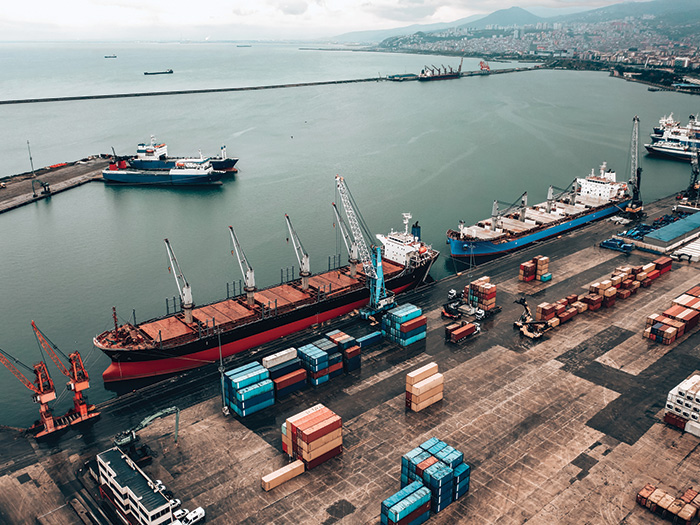Here’s How to Avoid Losses in a $10 Trillion Construction Industry
According to the McKinsey Global Institute, the construction industry is one of the largest sectors in the world economy, with approximately $10 trillion spent on construction-related goods and services every year, representing 13 percent of the world’s GDP[1]. Off-Highway Research recently reported that global construction equipment sales are expected to increase by 12 percent in 2018, translating to nearly one million units in total sales and almost $99 billion in total retail value of sales.
Industry experts attribute this growth in worldwide construction-related goods and services to such factors as an expanding population coupled with the global rise of aging infrastructures and rapid urbanization.
While this bodes well in terms of healthy sales for the segment, construction companies and contractors of all sizes need to recognize that with additional business volume comes increased risk of accidents and equipment damage. This article focuses on three major categories of equipment damage, addresses their risk factors and suggests controls to mitigate exposures.
Fighting Fire With…
Fire is a major cause of loss throughout the contractor equipment segment. Fires may occur at job sites and staging areas, damaging or destroying the equipment that is located there, or a fire could ignite on the equipment itself from a variety of sources.
Some of the more common hazards include: operating equipment around dry brush, trash or other flammable materials; storing equipment in buildings constructed of combustible materials and lacking fire protection; improper storage of flammable materials; careless smoking; and hot work. Equipment-related fires can result from electrical shorts, fuel or hydraulic leaks, overheating and unprotected exhaust systems.
There are several commonsense ways to lower the risk of fire loss to your equipment.
The most important of these is frequent and thorough inspections of job sites, facilities and equipment, followed closely by an effective, preventive maintenance (PM) program. Properly conducted inspections identify the hazards noted above and provide a system for documenting and tracking corrective actions.
And, PM programs help maintain equipment reliability and safety by providing fleet and equipment managers with a means for scheduling and tracking maintenance and repairs according to service hours, miles or other conditions established by the manufacturer.
One of the most basic but frequently overlooked preventive measures is to outfit all vehicles and heavy equipment with portable dry-chemical fire extinguishers and to train employees in their use.
Extinguishers should be included on inspection checklists to ensure they are ready for use and have not been damaged or accidentally discharged. This simple practice alone can make the difference between a relatively minor incident and a major loss.
The project manager or site supervisor has overall responsibility for the condition of the site and equipment and for ensuring that employees comply with key safety policies. This individual must also make certain an emergency response plan is in place, including after-hours notification procedures and contact information for security personnel. The plan should be re-evaluated periodically throughout the duration of the project as risk factors may change.
Water, Water Everywhere
Project sites with contractor equipment may be exposed to heavy damage from named windstorms and accompanying storm surge, and a detailed hurricane plan should be in place for areas prone to tropical storm activity.
When a hurricane is approaching, early efforts should be made to move as much equipment as possible to a safe location out of the storm’s path, although this is not always possible. Equipment remaining on site must be moved to higher ground and well-secured, including lowering or dismantling booms and other appendages. Smaller equipment, tools and materials should be tied down or stored in trailers to prevent them from being turned into projectiles in high winds.
One of the most basic but frequently overlooked preventive measures is to outfit all vehicles and heavy equipment with portable dry-chemical fire extinguishers and to train employees in their use. Extinguishers should be included on inspection checklists to ensure that they are ready for use and have not been damaged or accidentally discharged. This simple practice alone can make the difference between a relatively minor incident and a major loss.
Changing weather patterns and dense development have created vulnerability to flooding in areas that have never experienced such events previously. Heavy rains can quickly overcome storm water drainage systems, causing widespread flash flooding and extensive damage. While it is not always possible to anticipate these events, experienced contractors should be mindful of low-lying storage locations and monitor weather alerts to take appropriate action.
Identifying the geographic risks and creating an emergency plan should be a construction company’s first line of defense in mitigating site and equipment damage. Additionally, employees working at the site should be trained on where and how to store equipment so they know which steps to take to help reduce the impending threat.
Overturning the Odds to Your Favor
While in operation, contractor equipment can sustain damage in a variety of ways: Colliding with other equipment or structures on the site; being struck by falling trees or debris; exceeding rated operating capacities; becoming mired in marshy areas; or coming in contact with buried utilities or overhead transmission lines.
Many large losses are caused by upset or overturn of equipment. These cases result most commonly from machines working on inclines, where they either slide into other objects or roll over. Prevention of overturn incidents rests entirely with the operator, their assessment of the situation and knowledge of the machine’s limitations.
Newer operators who can operate safely on flat terrain may quickly get into trouble working on a slope without proper training and oversight. Upset/overturn cases may also occur when a machine loses its footing due to a trench collapsing. Again, operator training and experience combined with safe work practices can help prevent these types of incidents from occurring.
The occurrence rate for contact damage is typically higher for equipment used in demolition and land clearing operations than for construction and excavation. There also may be a higher contact damage claim rate with rental equipment providers, particularly for what operators may perceive as “minor” cosmetic damage (dents and scratches). Rental companies conduct stringent off-hire inspections and will claim for any and all damage found.
The Bottom Line
Worldwide sales of construction-related goods and services will continue to rise as more projects get underway.
That said, brokers and carriers have a golden opportunity to bring intrinsic value to the planning table and drive optimal results for clients through collaboration, risk engineering, education and creative solutions. Helping clients understand the causes of equipment damage and its loss patterns will lead to control strategies, many of which are low cost and can be implemented quickly and easily.
And, providing this type of guidance in a growing sector will lead to improved risk selection and renewal strategies, as well as improved policy terms and conditions. &
[1] McKinsey Global Institute, Reinventing Construction: A Route to Higher Productivity (McKinsey & Company, February 2017)










